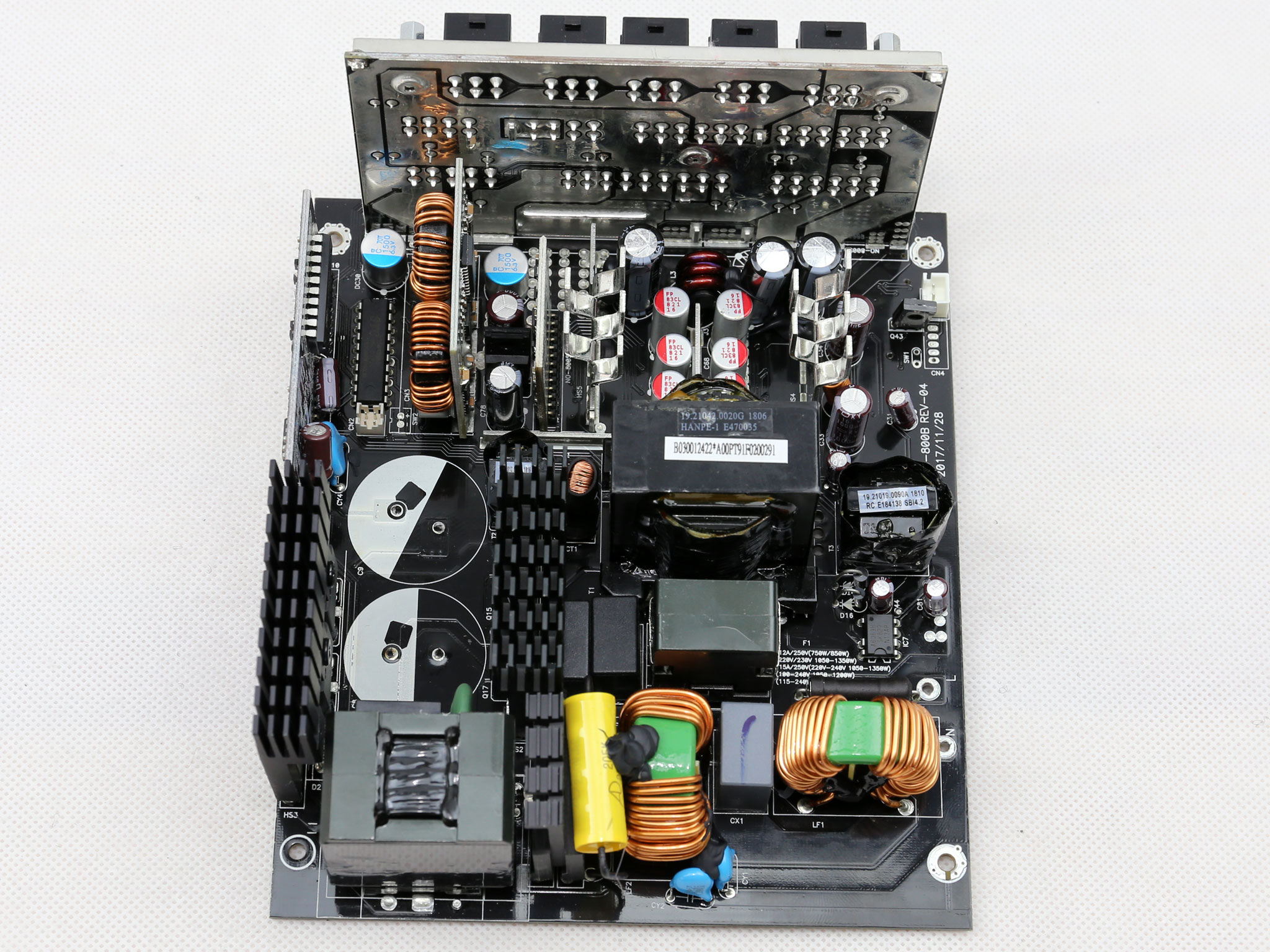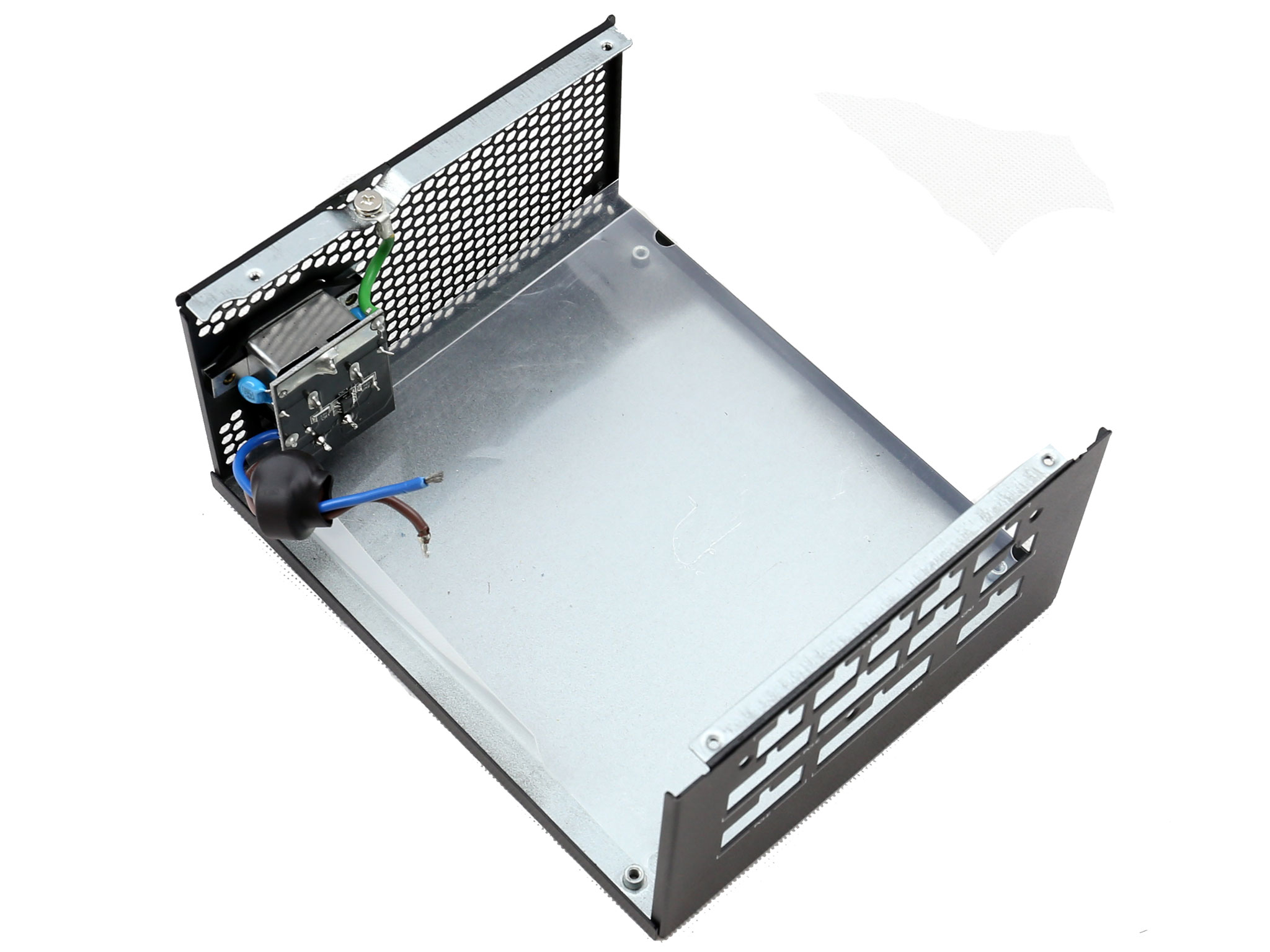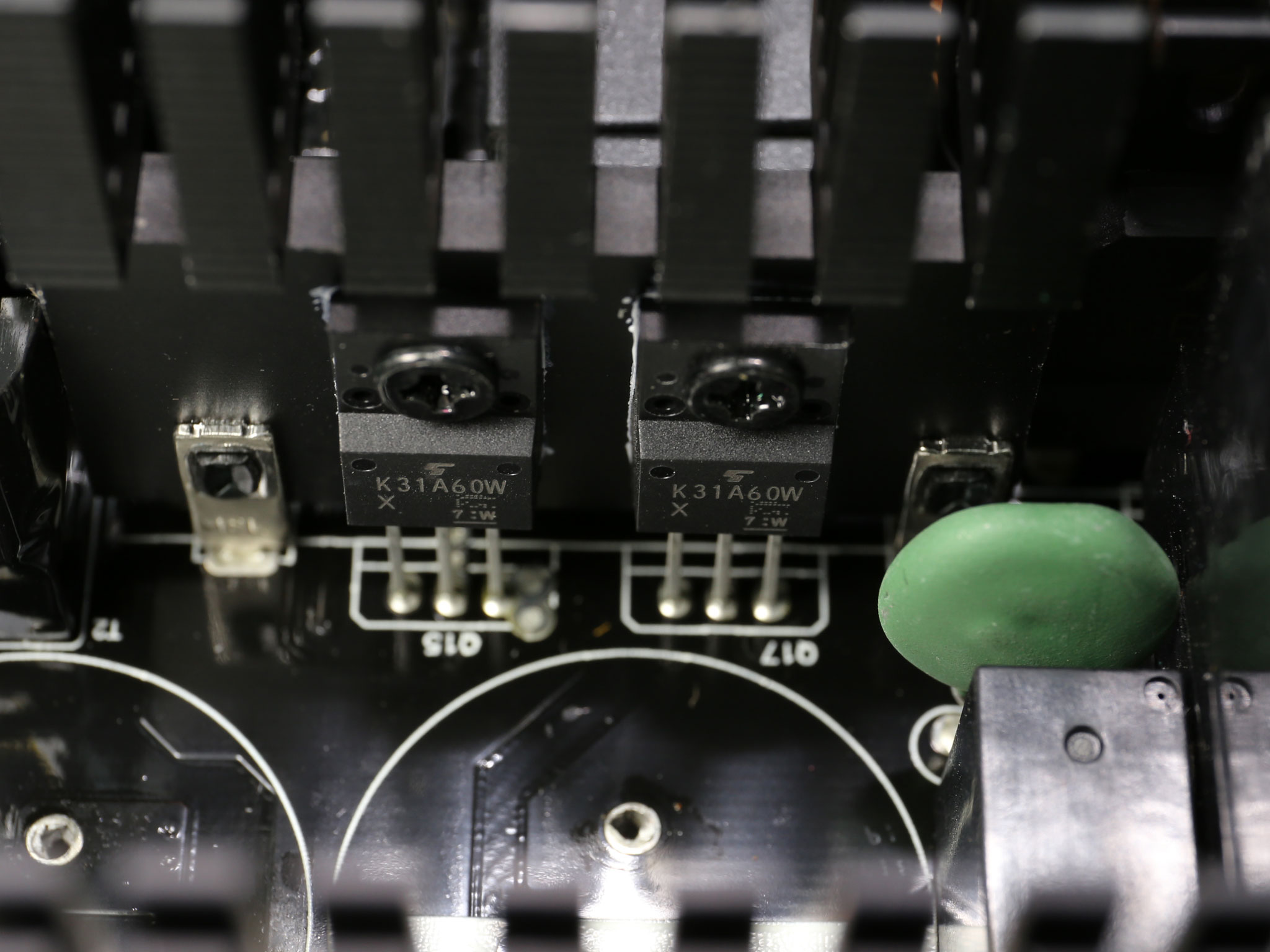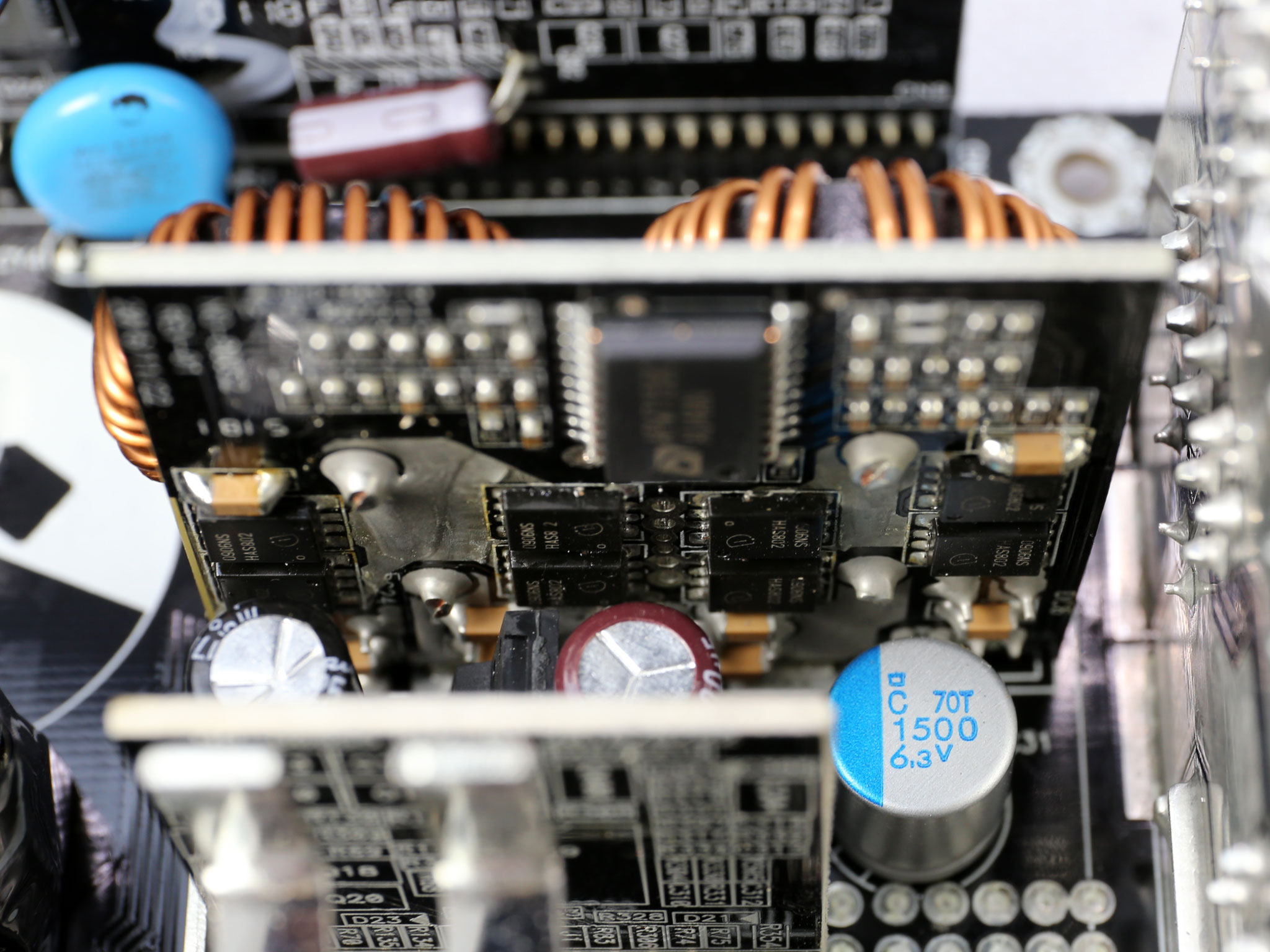PC Power & Cooling Silencer 1050W PSU Review: Affordable Yet Powerful
Why you can trust Tom's Hardware
Teardown & Component Analysis
Before proceeding with this page we strongly encourage you to a look at our PSUs 101 article, which provides valuable information about PSUs and their operation, allowing you to better understand the components we're about to discuss.
| General Data | |
|---|---|
| Manufacturer (OEM) | High Power |
| Primary Side | |
| Transient Filter | 4x Y caps, 2x X caps, 2x CM chokes, 1x MOV, 1x CMD02X IC |
| Inrush Protection | NTC thermistor & relay |
| Bridge Rectifier(s) | 2x GBJ2506L (600V, 25A @ 100°C) |
| APFC MOSFETs | 2x Infineon IPW60R120C7 (650V, 12A @ 100°C, 0.120Ω) |
| APFC Boost Diode | 1x CREE C3D10060 (600V, 10A @ 153°C) |
| Hold-up Cap(s) | 2x Nichicon (400V, 680uF, 2000h @ 105°C, GG) |
| Main Switchers | 2x Toshiba TK31A60W (600V, 30.8A @ 150°C, 0.088Ω) |
| APFC Controller | Infineon ICE3PCS01G |
| Resonant Controller | Champion CM6901X |
| Topology | Primary side: Half-bridge & LLC resonant controller Secondary side: Synchronous rectification & DC-DC converters |
| Secondary Side | |
| +12V MOSFETs | 8x APEC AP4N1R8CMT-A (60V, 32A @ 70°C, 1.8mΩ) |
| 5V & 3.3V | DC-DC Converters: 8x Infineon BSC0906NS (30V, 40A @ 100°C, 4.5mΩ) PWM Controller: Anpec APW7159C |
| Filtering Capacitors | Electrolytics: Nippon Chemi-Con (4-10,000 @ 105°C, KY), Rubycon (3-6000 @ 105°C, YXG) Polymers: Nippon Chemi-Con, FPCAP (FP) |
| Supervisor IC | SITI PS232S (OVP, UVP, 6x Channel OCP, SCP) |
| Micro Controller | STC 15W408AS |
| Fan Model | Globe Fan RL4Z B1352512H (135mm, 12V, 0.33A, 106.86 CFM, 1800 RPM, 29.2 dB[A], double ball-bearing) |
| Fan Power Transistor | STi 2SD882 (NPN) |
| 5VSB Circuit | |
| Rectifiers | 1x PFC P10V45SP SBR (45V, 10A) & 2x Infineon BSC0906NS (30V, 40A @ 100°C, 4.5mΩ) |
| Standby PWM Controller | Sanken STR-A6069H |
| -12V Circuit | |
| Rectifier | KEC KIA7912PI (-12V, 1A) |
We were recently introduced to this platform in Riotoro's Builder Edition 1200W. It looks to be a well-made High Power design with lots of clearance between components, facilitating unobstructed airflow and a relaxed fan profile. The heat sinks are almost non-existent on the secondary side; +12V FETs are installed on the PCB's solder side and mostly cooled by the chassis.




Although it has a lower capacity rating than Riotoro's Builder 1200W, the Silencer comes with larger bulk capacitors that allow for a longer hold-up time (though still not >17ms). Speaking of, only quality Japanese-made caps are used, so this unit should continue delivering good performance over time.
It is always nice to see a dedicated rectifier IC for the -12V rail. Insignificant though it might be, that rail can still bring down the whole PSU if it fails.







The first part of the transient/EMI filter is on a small board that, besides the AC receptacle and power switch, also hosts two Y caps and one X cap, along with a CMD02X IC responsible for isolating the bleeding resistors that discharge the X cap once the PSU starts. The filter's second part includes the same amount of X and Y caps, plus two CM chokes and an MOV.


A pair of bridge rectifiers is installed onto a dedicated heat sink. Two GBJ2506Ls are used, which can handle up to 50A of current.




The APFC converter's heat sink is small and the design of its fins easily gives away High Power as the manufacturer. Two Infineon IPW60R120C7 FETs and a single CREE C3D10060 boost diode are used. The bulk caps are provided by Nichicon (GG series). Their combined capacity is 1360uF, which is quite high for a 1050W PSU. Still, the hold-up time we measured doesn't exceed 17ms.
Get Tom's Hardware's best news and in-depth reviews, straight to your inbox.



An Infineon ICE3PCS01G APFC controller and SITI PS232S supervisor IC are installed on the same daughterboard. They are electrically isolated thanks to three optocouplers.
We are not used to seeing NTC thermistors in High Power platforms, so it was a nice surprise to find one supported by a bypass relay.


The main switching FETs are two Toshiba TK31A60Ws installed in a half-bridge topology. An LLC resonant converter is used to boost efficiency, and the PWM/FM controller is a Champion CM6901X installed on a small board.


Here's the PSU's main transformer and the LLC resonant converter's resonant tank.




Small heat sinks on the secondary side help keep the +12V FETs' temperatures low. In total, eight APEC AP4N1R8CMT-A FETs are used, the same number found on Riotoro's Builder Edition 1200W.





Electrolytic caps on the secondary side are provided by Chemi-Con (KY series) and Rubycon (YXG). All of the larger electrolytic caps are Rubycon's YXG, and on paper they're inferior to Chemi-Con's KZE caps. A number of polymer caps, provided by FPCAP and Chemi-Con, are also used.




The VRMs that handle the minor rails use eight Infineon BSC0906NS FETs, and the common PWM controller is an Anpec APW7159C. Given so many FETs, we are not surprised that the minor rails can deliver so much power.



This is the 5VSB circuit's main transformer. The circuit also seems to use a pair of Infineon BSC0906NS FETs, along with a PFC P10V45SP SBR. Its standby PWM controller is a Sanken STR-A6069H.



We find a number of Chemi-Con and FPCAP polymer caps on the modular board's front side. They're there to further reduce ripple on the PSU's rails.





The soldering quality is great! We're not fond of long component leads, though, and High Power failed us in that department.


The photos above clearly show this platform's long component leads. They should be cut shorter. Otherwise, if they get hot enough, they could piece the plastic shield isolating the PCB from the chassis.




An STC 15W408AS MCU is most likely utilized by the fan's control circuit. Speaking of the fan, it is provided by Globe Fan and it uses a double ball-bearing. Its model number is RL4Z B1352512H.
MORE: Best Power Supplies
MORE: How We Test Power Supplies
MORE: All Power Supply Content
Current page: Teardown & Component Analysis
Prev Page Unboxing Video Next Page Load Regulation, Hold-Up Time & Inrush Current
Aris Mpitziopoulos is a contributing editor at Tom's Hardware, covering PSUs.
